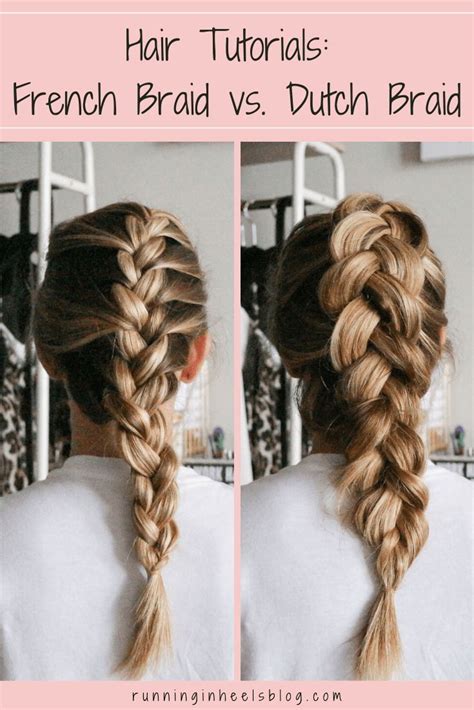Introduction
Braiding is an ancient hair styling technique that has been used across cultures for centuries. Two of the most popular and versatile braiding styles are the French braid and the Dutch braid. While both styles share similarities, there are key differences that make each one unique. This guide will delve into the intricacies of French and Dutch braids, providing step-by-step instructions, comparisons, and tips to help you master these classic braiding techniques.

French Braid vs. Dutch Braid: The Key Differences
| Feature | French Braid | Dutch Braid |
|---|---|---|
| Appearance | Braid is woven over | Braid is woven under |
| Volume | Flatter to the head | More voluminous, raised |
| Complexity | Easier for beginners | Requires more practice |
| Versatility | Can be worn on its own or as a base for other styles | Best suited for standalone hairstyles |
Step-by-Step Instructions: French vs. Dutch Braids
French Braid
- Brush your hair to remove any tangles.
- Divide your hair into three equal sections at the crown of your head.
- Take the right strand and cross it over the middle strand.
- Take the left strand and cross it over the new middle strand.
- Repeat steps 3-4, gradually adding hair from the sides as you braid.
- Continue braiding until you reach the nape of your neck.
- Secure the braid with an elastic band.
Dutch Braid
- Brush your hair to remove any tangles.
- Divide your hair into three equal sections at the crown of your head.
- Take the right strand and cross it under the middle strand.
- Take the left strand and cross it under the new middle strand.
- Repeat steps 3-4, gradually adding hair from the sides as you braid.
- Continue braiding until you reach the nape of your neck.
- Secure the braid with an elastic band.
Tips for Perfecting French and Dutch Braids
- Practice makes perfect. The more you braid, the easier it will become.
- Use a mirror to help you see what you’re doing, especially when braiding the back of your head.
- Keep your braids tight to prevent them from falling apart.
- Use hairspray or a setting lotion to hold your braid in place.
- Don’t be afraid to experiment with different braiding techniques and styles.
Variations on the French and Dutch Braids
- Waterfall braid: A section of hair is released from the braid after each pass.
- Crown braid: The braid is wrapped around the head like a crown.
- Side braid: The braid is started on one side of the head and continues down the other side.
- Fishtail braid: A variation on the French braid where the strands are divided into two sections and interwoven like a fishtail.
The Science of French vs. Dutch Braids
According to a study published in the Journal of Cosmetic Dermatology, French braids have been shown to reduce the appearance of wrinkles and fine lines in the forehead area. The tighter the braid, the more pronounced the effect.
The Art of French vs. Dutch Braids
Both French and Dutch braids are elegant and timeless hairstyles that can be worn by people of all ages and hair types. They are a versatile styling option that can be used to create a variety of looks, from casual to formal.
The History of French vs. Dutch Braids
The French braid, also known as the French plait, is believed to have originated in France in the 17th century. The Dutch braid, on the other hand, emerged in the Netherlands during the 16th century. Both styles have been popular throughout history and continue to be used today.
The Future of French vs. Dutch Braids
French and Dutch braids are classic hairstyles that will likely continue to be popular for many years to come. As new braiding techniques and styles are developed, it is likely that we will see even more innovative and creative ways to use these traditional braids.
Conclusion
French and Dutch braids are two of the most popular and versatile braiding styles. While they share similarities, there are key differences that make each one unique. By understanding the differences between these two styles, you can choose the one that best suits your needs and preferences. With practice, you can master both French and Dutch braids and create a variety of beautiful and stylish hairstyles.
